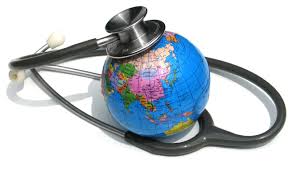
With the creation of the Medicare program in 1965, a funding stream was established to support the training of medical residents who provided care for Medicare beneficiaries. In subsequent years, Medicare has maintained these payments to teaching hospitals and remains the largest payer for Graduate Medical Education (GME), with expenditures totaling about $10 billion annually. This represents two-thirds of Federal GME support, with another $4 billion per year provided to hospitals through State Medicaid GME support.
This expenditure was a major motivation for the Senate Finance Committee to request the Institute of Medicine (IOM) to issue a report entitled “Graduate Medical Education That Meets the Nation’s Health Needs.” The Report proposed major reforms to create a GME system with greater transparency, accountability and strategic direction, in order to increase its contribution to achieving the nation’s health goals. Prior to publication of this long awaited report on July 29, 2014, GME financing policies received substantial attention in the last two sessions of Congress, with a particular focus on increasing the number of federally funded GME positions. The House and Senate committees with GME jurisdiction produced multiple legislative initiatives.
However, there was considerable opposition from primary care stakeholders to some of the proposed changes because of inadequate emphasis on ambulatory training. Possible redistribution of Medicare GME funding was also of concern to many. This seemed to dissuade Congress from passing reform of GME policies. Nevertheless, 1,500 new GME positions were authorized in the recent Veterans Health Administration legislation.
Many anticipated that the long awaited IOM GME Report would provide the data and perspective to forge a consensus on needed changes in GME policy. However, the stakeholder response to this report was devoid of constructive agreement, with substantial controversy generated among participants at a subsequent GME forum hosted by Health Affairs. Congressional committees responsible for GME funding may have viewed this lack of consensus among GME stakeholders as a major obstacle.
Thus, in an attempt to move this process forward, the Health subcommittee of the Committee on Energy and Commerce (E&C) in the House of Representatives issued an open letter requesting GME guidance on December 6, 2014. They indicated their desire for additional input as Congress prepared to consider the IOM recommendations. They formulated seven specific questions in order to focus this input.
In this Health Affairs Blog post, we express general support for many of the IOM recommendations; we also propose two major modifications. We recognize that the complexity of GME policy provides a challenge to Congress in developing GME reform, which must be based on data-driven policy and which evolves in conjunction with our rapidly changing health care system. Thus, in addition to an immediate initiative which we propose to address our deficit in ambulatory training, we suggest that the E&C Committee consider the merits of new leadership in governance and financing of GME by a rejuvenated Council on Graduate Medical Education (COGME), to provide Congress and the Health and Human Services (HHS) Secretary with data-driven recommendations which will improve our GME system.
IOM Recommendations
The IOM recommendations include significant reforms needed to create transparency and ensure that the public’s sizeable investment in GME is aligned with the health needs of our nation. They address critical problems inherent within our current GME system. These problems include:
- A minimal relationship between the specialty makeup of the physician workforce and the health needs of the population.
- Inadequate diversity of the physician population.
- Significant geographic misdistribution of physicians.
- A discrepancy between the competencies required for current medical practice and the current capacity for developing new physicians’ knowledge and skills.
- A lack of fiscal transparency relating to the utilization of Federal and State GME funds by teaching hospitals, thereby impeding progress in addressing these deficiencies.
Because the rules governing the Medicare GME financing system are based on statute, recommended reforms cannot occur without legislative action. We agree with much of the IOM Report; we urge Congress to amend Medicare law and regulation in order to implement many of the IOM recommendations, after careful consideration by COGME of the involved complexities, with possible modification which might achieve better stakeholder consensus.
Two Proposed Immediate Modifications of IOM Recommendations
A new role for COGME. Instead of the IOM recommended GME council and its Transition Fund, we propose that COGME provide the necessary GME reform recommendations to Congress and the HHS Secretary. A rejuvenated COGME could facilitate input from an expanded membership. In the interest of objectivity and creditability, we previously emphasized that COGME should be comprised of experts in workforce issues, health policy, economics, and education, as well as those actively directing GME programs. We also emphasized the need for adequate staffing to allow the data collection and analysis required to carry out the functions recommended by the IOM report and the appropriate COGME reporting relationships. We anticipate that the necessary legislation and logistics for rejuvenating COGME could be accomplished within the current session of Congress, allowing it soon to begin serving as the mechanism for establishing and conveying GME reform recommendations to Congress and the HHS secretary.
Expanding GME through Teaching Health Centers. We do not support the IOM conclusion that current Federal funding levels of residency positions are adequate to meet our future health system needs. We have previously proposed a near-term and attainable pathway to expand GME that could achieve consensus among stakeholders. This approach would sustain and expand Teaching Health Centers (THCs), a recent initiative that directly funds community-based GME sponsoring institutions to train residents in primary care specialties, dentistry and psychiatry. We have further recommended subsequent selective expansion of GME to meet primary care and other demonstrable specialty needs within communities by using Medicaid funds for support.
Expansion of the THCGME program should establish 3,000 positions in this three-year residency program. Its viability would be dependent upon reauthorization of the HRSA budget supporting the National Health Service Corps (NHSC) and Community Health Center expansion, thus avoiding the approaching “fiscal cliff” for primary care. The new THCGME residency program should expand family medicine positions and include a substantial number of programs in General Internal Medicine, Pediatrics, and Adult and Child Psychiatry, as provided for in the original statute.
Psychiatry as well as primary care, particularly in rural underserved areas, is in dire need of expansion to provide access to care, especially for Medicaid patients. THC trainees tend to return to safety net settings for practice. The pipeline of child psychiatrists is particularly depleted. The extra residency training required in this area is not associated with increased third-party reimbursement in subsequent practice. NHSC educational debt repayment for THC Child and Adolescent Psychiatry graduates committed to underserved areas could incentivize residency applicants.
Implementation
We recommend a phased implementation of GME reform to the E&C Committee. First, the legislation required to rejuvenate COGME should be enacted as soon as possible, thereby allowing GME reform to proceed under COGME leadership. Meanwhile, the 3,000 new THCGME positions should be established before program authorization is due to expire in October of 2015, in order to maintain program viability. We recommend funding the 3,000 positions in this three-year residency program through Medicare, to assure sustainability. This would require less than a 1.5 percent addition to the current Medicare GME budget, if the current $150,000 per resident per year support was maintained.
Both the urban and rural primary care and psychiatrist shortages (particularly for Medicaid patients in view of the current absence of Medicare/Medicaid reimbursement parity) must be addressed without delay. Subsequently, following rejuvenation of COGME, further GME expansion could be recommended for primary care and psychiatry, as well as for some subspecialties, on the basis of regional, in-depth workforce data; this additional GME support would be derived from State Medicaid funds (5), avoiding incursion on Medicare GME funds.
In conclusion, we have recently proposed rejuvenating COGME with expanded resources and membership. If accomplished, COGME should be able to serve the role recommended for the GME Council described in the IOM report, thereby creating new leadership for GME reform.
As an immediate first step, we have proposed reauthorization of the THCGME program, with Medicare GME funding appropriated to assure sustainability. This small addition to the Medicare budget would have great value by encouraging optimism within this program’s broad constituency that the importance of ambulatory training is now recognized by Congress. Furthermore, these additional positions would begin to address geographic workforce disparities, and they would provide more opportunities for the significant percentage of international medical graduates who are U.S. citizens and facing future difficulty obtaining a residency position.
We trust that Congress, in its wisdom, will recognize the importance of GME reform in shaping our health care system. This reform will be a complex process, requiring time and diplomacy to forge the consensus necessary for progress, and could be achieved under the new leadership of a rejuvenated COGME.


 "Ada monopoli dan suatu sikap resisten yang ditunjukkan dokter-dokter Indonesia terhadap dokter asing yang ingin masuk dan berpraktik di Indonesia" kata Army Nurdin seperti dikutip di The Lancet.
"Ada monopoli dan suatu sikap resisten yang ditunjukkan dokter-dokter Indonesia terhadap dokter asing yang ingin masuk dan berpraktik di Indonesia" kata Army Nurdin seperti dikutip di The Lancet.
 Buruknya distribusi dokter bukanlah hal yang baru lagi di Indonesia. Saat ini permasalahan kurangnya tenaga dokter terutama di daerah rural juga dialami oleh berbagai negara di dunia. WHO pada tahun 2013 sudah mengeluarkan rekomendasi untuk meningkatkan kualitas, kuantitas dan distribusi dokter.
Buruknya distribusi dokter bukanlah hal yang baru lagi di Indonesia. Saat ini permasalahan kurangnya tenaga dokter terutama di daerah rural juga dialami oleh berbagai negara di dunia. WHO pada tahun 2013 sudah mengeluarkan rekomendasi untuk meningkatkan kualitas, kuantitas dan distribusi dokter. Krisis tenaga kesehatan melanda dunia. Hal tersebut diperparah dengan buruknya distribusi tenaga kesehatan terutama di negara-negara sub-sahara Afrika. Selain itu permasalahan miss-match kompetensi yang diberikan dipendidikan dengan yang dibutuhkan dilapangan menyebabkan pelayanan kesehatan kepada masyarakat tidak maksimal.
Krisis tenaga kesehatan melanda dunia. Hal tersebut diperparah dengan buruknya distribusi tenaga kesehatan terutama di negara-negara sub-sahara Afrika. Selain itu permasalahan miss-match kompetensi yang diberikan dipendidikan dengan yang dibutuhkan dilapangan menyebabkan pelayanan kesehatan kepada masyarakat tidak maksimal.